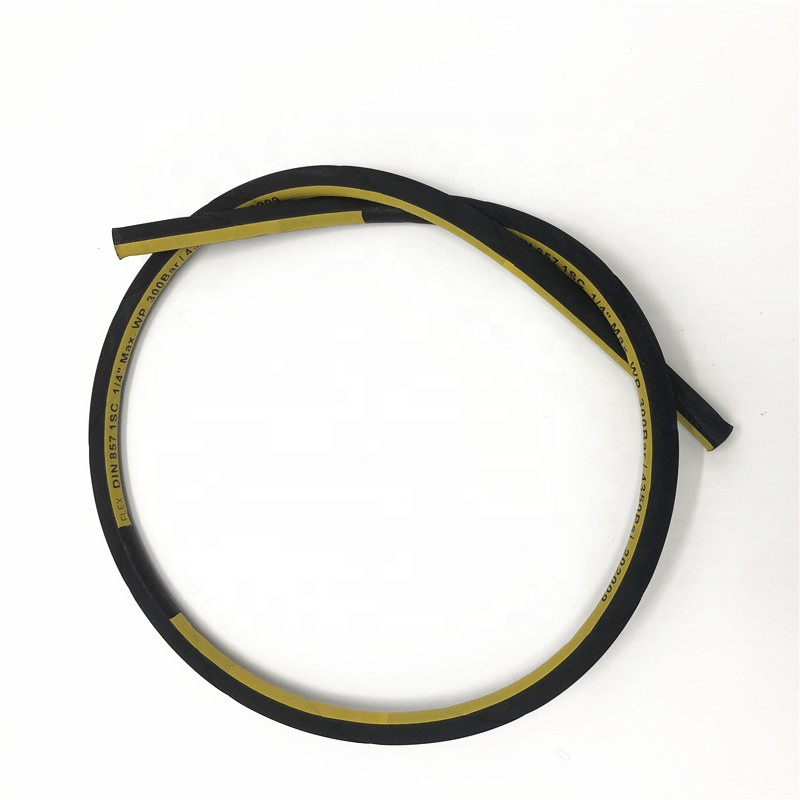335345435
Aug . 06, 2024 06:11 Back to list
Exploring the Benefits and Applications of Discharge Rubber Hoses in Various Industries
Understanding Discharge Rubber Hoses Importance and Applications
Discharge rubber hoses are essential tools in various industries, primarily for the efficient transfer of water, slurries, and other fluids. Their design, material composition, and flexibility make them ideal for a wide range of applications, from construction and agriculture to manufacturing and waste management. In this article, we will explore the significance of discharge rubber hoses, their key features, and their applications in different sectors.
Key Features of Discharge Rubber Hoses
One of the most notable qualities of discharge rubber hoses is their adaptability to various conditions. Made from high-quality rubber compounds, these hoses can endure extreme temperatures, resist abrasion, and withstand diverse chemical exposures. This durability is crucial for ensuring that the hoses deliver their intended fluids without breaking down or leaking over time.
Additionally, discharge rubber hoses are designed to be lightweight and flexible, which allows for easy handling and maneuverability. This flexibility also enables the hoses to be coiled and stored efficiently when not in use. The combination of lightweight nature and flexibility makes them an indispensable resource in scenarios where quick deployment and movement are required.
Furthermore, the inner linings of these hoses can vary, allowing for compatibility with different types of materials. Whether transferring water, slurries, or chemicals, the right lining can significantly enhance performance and longevity.
Applications Across Industries
discharge rubber hose

1. Construction In the construction industry, discharge rubber hoses are widely used for transferring water to work sites. For instance, they are commonly employed in dewatering applications, where excess water is removed from excavation sites. Their ability to handle high water flow rates makes them suitable for various tasks, such as concrete mixing and irrigation.
2. Agriculture Farmers use discharge rubber hoses for irrigation and the transfer of fertilizers. Their flexibility allows farmers to maneuver them across fields easily, ensuring water and nutrients reach crops efficiently. Additionally, these hoses can be used to drain waterlogged areas, helping to maintain optimal soil conditions for crop growth.
3. Manufacturing In manufacturing settings, discharge rubber hoses are vital for transporting various liquids, including lubricants and coolants. Their resistance to high temperatures and chemicals ensures that they maintain integrity when used with industrial machinery.
4. Waste Management Discharge rubber hoses play a crucial role in waste management systems. They are often utilized for transferring sludge, wastewater, and other byproducts from treatment facilities. The durability and chemical resistance of these hoses make them well-suited for handling potentially corrosive materials.
5. Firefighting Fire departments frequently use discharge rubber hoses for quickly delivering water to extinguish flames. Their ability to handle high pressure and flow rates is critical for effective firefighting operations.
Conclusion
Discharge rubber hoses are indispensable tools in various industries due to their durability, versatility, and reliability. Their ability to handle different materials, extreme temperatures, and abrasive conditions makes them suitable for a wide array of applications, from construction and agriculture to manufacturing and waste management. As industries continue to evolve, the demand for high-quality discharge rubber hoses will persist, emphasizing the need for ongoing innovation in their design and material composition. Understanding the importance and diverse applicability of these hoses can help industries optimize their operations and ensure efficient fluid transfer.
-
SAE 100 R17 Black Smooth Cover Hydraulic Hose
NewsMar.07,2025
-
SAE 100 R17 Black Smooth Cover Hydraulic Hose
NewsMar.07,2025
-
SAE 100 R17 Black Smooth Cover Hydraulic Hose
NewsMar.07,2025
-
SAE 100 R17 Black Smooth Cover Hydraulic Hose
NewsMar.07,2025
-
SAE 100 R17 Black Smooth Cover Hydraulic Hose
NewsMar.07,2025
-
steel wire braided hydraulic hose
NewsMar.07,2025



